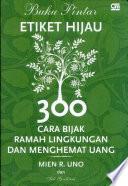
Digital Marketing
Communicating, Selling and Connecting
Technology has forever changed the way that businesses engage with customers, and has changed the role of marketing significantly. Across 27 chapters, this textbook provides a complete introduction to the background of digital marketing, particularly the ways in which customers use digital media, and how technology can be used to fulfil the three key goals of digital marketing:effectively engaging with customers, selling to customers and using the power of networks to make connections with customers.
- ISBN 13 : 178811535X
- ISBN 10 : 9781788115353
- Judul : Digital Marketing
- Sub Judul : Communicating, Selling and Connecting
- Pengarang : Charles F. Hofacker,
- Kategori : Business & Economics
- Penerbit : Edward Elgar Publishing
- Bahasa : en
- Tahun : 2018
- Halaman : 224
- Google Book : https://play.google.com/store/books/details?id=ic1eDwAAQBAJ&source=gbs_api
-
Ketersediaan :
Across 27 chapters, this textbook provides a complete introduction to the background of digital marketing, particularly the ways in which customers use digital media, and how technology can be used to fulfil the three key goals of digital ...









